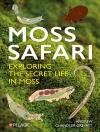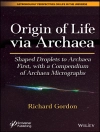Design and Development of Biological, Chemical, Food and
Pharmaceutical Products has been developed from course material
from the authors’ course in Chemical and Biochemical Product
Design which has been running at the Technical University Denmark
for years. The book draws on the authors’ years of experience
in academia and industry to provide an accessible introduction to
this field, approaching product development as a subject in its own
right rather than a sideline of process engineering
In this subject area, practical experience is the key to
learning and this textbook provides examples and techniques to help
the student get the best out of their projects. Design and
Development of Biological, Chemical, Food and Pharma Products aims
to aid students in developing good working habits for product
development. Students are challenged with examples of real problems
that they might encounter as engineers.
Written in an informal, student-friendly tone, this unique book
includes examples of real products and experiences from real
companies to bring the subject alive for the student as well as
placing emphasis on problem solving and team learning to set a
foundation for a future in industry. The book includes an
introduction to the subject of Colloid Science, which is important
in product development, but neglected in many curricula. Knowledge
of engineering calculus and basic physical chemistry as well as
basic inorganic and organic chemistry are assumed.
An invaluable text for students of product design in chemical
engineering, biochemistry, biotechnology, pharmaceutical sciences
and product development.
* Uses many examples and case studies drawn from a range of
industries.
* Approaches product development as a subject in its own right
rather than a sideline of process engineering
* Emphasizes a problem solving and team learning approach.
* Assumes some knowledge of calculus, basic physical chemistry
and basic transport phenomena as well as some inorganic and organic
chemistry.
Jadual kandungan
Preface.
Acknowledgments.
Introduction.
Lessons.
Begin.
1 Look Around.
2 Team Up.
3 Get a Method.
4 Analyse the Situation.
Design.
5 Find Needs.
6 Specify the Product.
7 Create Concepts.
8 Select a Concept.
9 Protect the Concept.
Develop.
10 Formulate the Product.
11 Flowsheet the Process.
12 Estimate the Cost.
13 Equip the Process.
14 Scale Up.
Exploit.
15 Organize the Market.
16 Forecast Money Flows.
17 Learn to Sell.
18 Plan Future Products.
Conclusion.
Projects.
P1 Understanding Products.
P2 From Needs to Concept.
P3 Making a Product.
P4 Your Own Product.
Notes.
N1 Experiment at Home.
N2 Plan Your Project.
N3 Present Your Results.
N4 Interview Your Customer.
Colloids.
C1 Product Structure.
C2 Interfaces.
C3 Adsorption.
C4 Rheology.
Index.
Mengenai Pengarang
J.A. Wesselingh, Retired
Soren Zinck Kiil, Associate Professor, Department of Engineering, Technical University Denmark
Martin E. Vigild, Associate Professor Danish Polymer Centre, Department of Chemical Engineering, Technical University of Denmark












